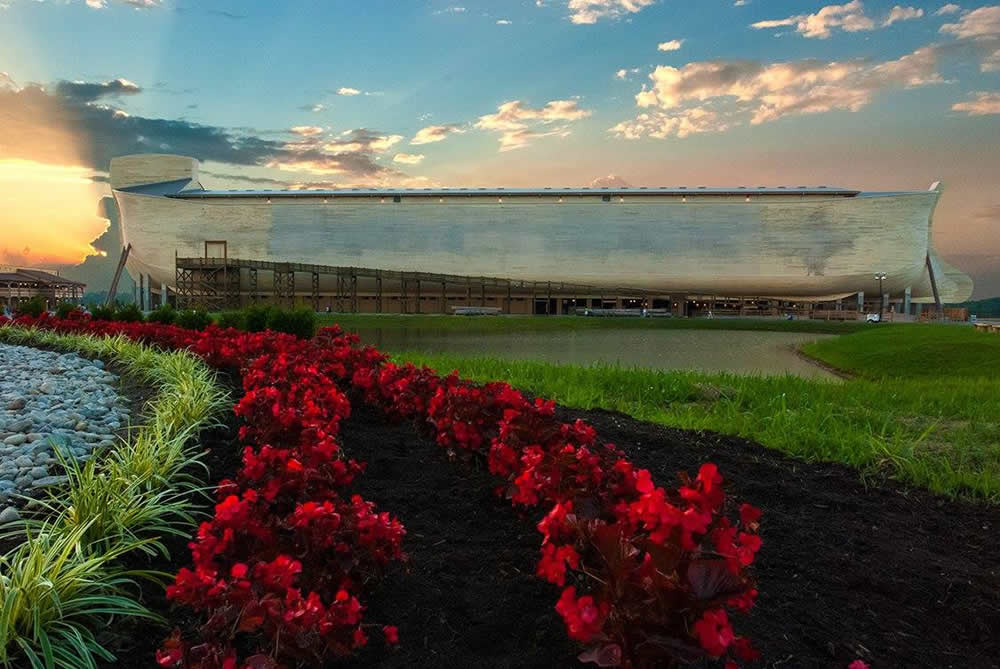Why Is the Ark Covered with Accoya Wood?
We’ve been getting a number of questions about the shiplap (horizontal planking of the pine boards) on the side of the Ark. Whenever I post a picture of the Ark on social media, someone inevitably asks why different parts of the Ark are different shades. Well, that’s an easy question to answer. Because we installed the middle section before the end sections, the middle is more weathered than the bow and stern. Eventually the color will be a uniform, light silvery gray. Our attractions design vice president wanted this particular look—and it’s practical too, as explained below.
Accoya Shiplap
The shiplap we used is called Accoya®, which is a trademarked name referring to the process by which it’s made. The wood is radiata pine grown in New Zealand and then shipped to the Netherlands where it underwent an acetylation process. After that, it made its way to High Point, North Carolina, where it was milled to our specifications for differing widths of shiplap planking. Finally it arrived in Williamstown, Kentucky, to be installed on the Ark.
Accoya has a 50-year ground contact guarantee against insects and rot. It’s very low maintenance and requires no continual upkeep. Many people wonder why we didn’t stain the Ark. Well, it would take about 450 gallons of stain to cover the Ark, and we’d have to spend $250,000 every four to six years in upkeep! So we instead opted for Accoya, which will naturally weather to a very pleasant color and will require almost no upkeep.

Pitch on the Ark?
People also often ask if we used pitch on the Ark. Genesis 6:14 says, “Cover [the Ark] inside and outside with pitch.” Though this could be referring to different kinds of pitch, the Bible doesn’t give additional details on what kind it was. Whichever kind Noah used, the pitch waterproofed the Ark for the long voyage ahead.
Now, our Ark doesn’t float—after all, it’s anchored to three buildings that hold restrooms, elevators, and exit stairs—and pitch is very messy, so we decided not to use it. But we are using treated wood anyway. We do, however, have a giant pitch pot you can view as you prepare to enter the Ark. This pot and the accessories with it show that Noah did indeed coat the Ark inside and out with pitch, just as God commanded him to.
If you haven’t seen the Ark in Northern Kentucky for yourself, you’ll definitely want to. It’s an experience like no other! Plan your visit at ArkEncounter.com.
Thanks for stopping by and thanks for praying,
Ken
This item was written with the assistance of AiG’s research team.

Answers in Genesis is an apologetics ministry, dedicated to helping Christians defend their faith and proclaim the good news of Jesus Christ.
- Customer Service 800.778.3390
- Available Monday–Friday | 9 AM–5 PM ET
- © 2025 Answers in Genesis

